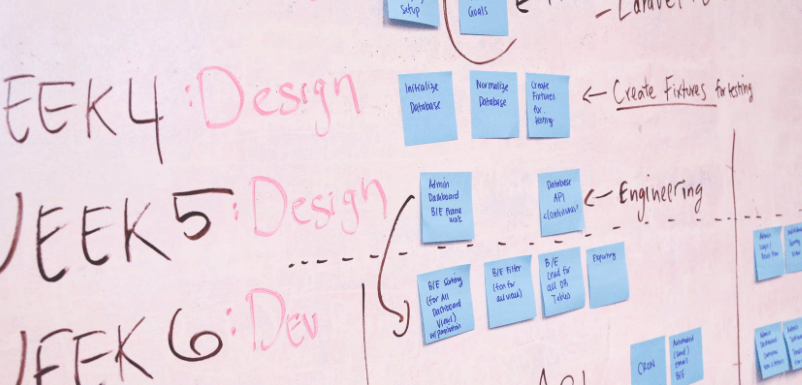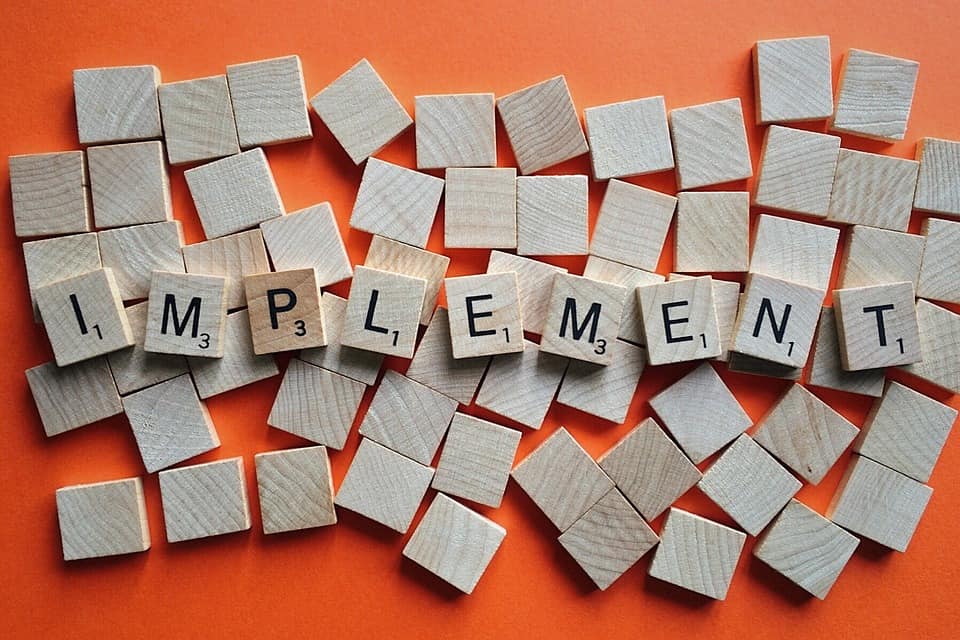SAFe Software Development: A Definitive Guide to Scaled Agile Framework
Scaled Agile Framework (SAFe) allows you to apply lean-agile practices in scaling agile in your organization.
Free to use and is utilized by hundreds of large businesses, it sustains and drives dramatic increases in quality and improvement in lean-agile employee management.
SAFe provides a business with a knowledge-base of proven, integrated agile principles and lean-agile practices to support enterprise agility.
What is SAFe in software development?

Drew Jemilo and Dean Leffingwell released the SAFe framework in 2011 to help each business scaling agile and design better software that would synchronize with cross-domain and meet other cross-functional needs.
At the time, the product development team used traditional project management practices to deliver software. As changing market conditions heightened, new frameworks emerged to help a business make better solutions for delivery across their enterprise in full. SAFe was born.
Today, SAFe is one of the most popular scaled agile delivery frameworks, and SAFe’s global community of experts continues to advance its development and systems thinking.
What are the 4 core values of SAFe?
- Alignment
- Built-in Quality is a necessity in Lean and mandatory when choosing Lean.
- Transparency is the prerequisite for trust. SAFe helps the organization achieve transparency - Executives, Portfolio Managers, and all levels. Everyone can see work across multiple backlogs, program backlogs, and Team Backlog.
- Program Execution means there's a significant focus on working systems, evaluation of working systems, and ensuing business outcomes.
How does SAFe work?
An enterprise that is ready to employ Scaled Agile Framework (SAFe) has high-ranking sponsorship and a vital aim to unlock the intrinsic motivation of knowledge workers for change.
12 steps for implementing SAFe:
- 1. Reaching the peak
- 2. Training agents
- 3. Training executives, managers, and lean-agile leaders
- 4. Creating a lean-agile center of quality
- 5. Identifying value streams and Agile Release Trains
- 6. Planning and creating the application
- 7. Preparing for ART introduction
- 8. Training teams and unveiling the ART
- 9. Monitor the ART execution
- 10. Release more ARTs and value streams
- 11. Broaden the Portfolio
- 12. Support and expand
We build custom software with modern solutions in mind for any business and sizes!
We build custom software with modern solutions in mind for any business and sizes!
SAFe vs. Other scaled agile frameworks
SAFe vs. Scrum@Scale
In Scrum@Scale, everybody is part of an interchangeable Scrum team. S@S aims to establish a network of teams through essential roles and events linearly scaled without presenting new practices. For instance, one Scrum of Scrum (SoS) may not be enough for very complicated product development with 25 teams. Thus, a Scrum of Scrum of Scrums (SoSoS) with a Scrum of Scrum of Scrums Master (SoSM) may be necessary.
If you do not reduce batch sizes and manage queue lengths, does performance rise, or does productivity deteriorate?
SAFe vs. Large-Scale Scrum (LeSS)
Large-Scale Scrum takes a modest approach to roles, structure, and systems thinking. Where SAFe presents four configurations to help teams of greater size with increasingly complex solutions, LeSS offers two patterns. These are LeSS for two to eight teams and LeSS Huge for more than eight teams.
LeSS also diverges in its position that product owners should have complete authorization and strategic influence. And while in SAFe many aspects inform management and strategy, LeSS emphasizes a customer-centric approach.
SAFe vs. DA
Disciplined Agile is a toolkit that allows an enterprise to determine what operation makes the most sense. It proposes lightweight, lean, and agile software control, along with transformation expertise in areas like HR and finance, governance, DevOps, portfolio development and managing, and more. DA involves situationally utilizing different levels of scale to help with project management. It emphasizes decision-making enablement to help guide strategic focus.
Different levels and implementations of SAFe
There are two types of SAFe implementation and different levels.
SAFe 4.0 implementation: for resolutions that typically require many hundreds of specialists to develop, deploy, and maintain software. In SAFe 4.0 implementation, there are 4 Levels: Portfolio, Value Stream, Program, and Team.
SAFe 3.0 implementation: for smaller applications with 100 or fewer people. In SAFe 3.0 implementation, there 3 Levels: Portfolio, Program, and Team.

Team Level
- SAFe team members are part of the Agile Release Train (ART).
- Each team is equally responsible for decision making, building, and testing stories from their Team Backlog in fixed-length Iterations.
- Teams plan and execute two-week time-boxed iterations per agreed-to Iteration Goals.
- Every two weeks, teams use ScrumXP to deliver high-quality systems to create a System Demo.
- Different teams in the ART create an integrated and tested system. Stakeholders evaluate and respond with fast feedback.
- They apply Built-in Quality practices, the best practices.
- Each team has 5-9, including all the roles required to build a quality incremental value in every iteration.
- SAFe divides the growth timeline into a set of iterations within a Program Increment.
We build custom software with modern solutions in mind for any business and sizes!
We build custom software with modern solutions in mind for any business and sizes!
Program Level
- The value of SAFe is conveyed by extensive Agile Release Trains (ART). Emphasis is for the group, and the train is for the program.
- ART is the essential vehicle for esteem conveyance at the program level. It conveys a worth stream to the association.
- ART is of 5 - 12 Agile Teams (~50 – 125+ individuals.)
- In every PI, a "demo" and "Examine and adjust" meetings occur, and Planning starts for the following PSI.
- At a Program level, the Product Manager/Program Manager has content power. He characterizes and organizes the program build-up. Highlights can be started, or they can get from legends characterized at portfolio level.
- The highest level of interest/concern/association/in SAFe be Portfolio SAFe.
- The Portfolio gives the essential squares to getting sorted out the Lean-Agile Enterprise stream of significant worth using at least one Value Streams. It assists with creating frameworks and arrangements that are portrayed in essential SAFe.
- This typifies these components. It gives essential planning and other administration instruments.
- A portfolio is associated with business bi-directionally.
- It gives critical topics to direct the Portfolio to a more significant change in goals across the organization.
- Program Portfolio Management goes about as partners, and they are responsible for conveying the business results.
- This contains individuals, measures, and necessary form frameworks and arrangements that a venture needs to meet its essential base milestones.
Value Stream Level

- Value Stream Level is optional in SAFe.
- Value Stream Level is planned/intended for enterprises/manufacturers/association/organization who are: a) large in size; and b) assume the frameworks are mission pivotal. The disappointment in the large solution has unsatisfactory monetary and social results.
- If an enterprise can work with two or three hundred specialists, it may not need the develops of this level. They can use from the 'imploded see,' which is 3-level SAFe.
In Sum
Since leaders must work with a lean-agile mindset, take an economic view and always look at the big picture, SAFe becomes ideal in agile practices as it is an industry-proven and value-focused method, especially if SAFe principles are followed, like apply cadence or build incrementally with fast, integrated learning cycles.
SAFe allows organization and development teams to meet strategic goals and not just individual product management and goals. You can maintain and create a centralized strategy to deliver value.—it’s about time to market.
Get more information on SAFe by browsing through Laneways Software & Digital helpful reads on modern software solutions.
Jerome Rault
Partner with a software development team one that's passionate about creating success
With the broadness of the internet, and it’s continuous expansions across different platforms it is hard to leave a mark that lasts. With digital marketing services, easily make a mark of your own that pulls customers in from different parts of the internet.
